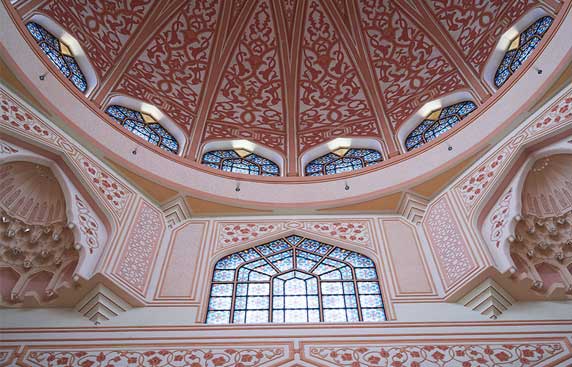The Importance of Calligraphy in Islamic Art
The Role of Calligraphy in Architecture
Calligraphy is a highly respected and celebrated art form in Islamic culture, often referred to as the “noblest of the arts.” With its intricate patterns and fluid lines, calligraphy has not only
been used to record the written word but also as a means of artistic expression that has significantly contributed to Islamic art and architecture. In this post, we will delve into the importance of calligraphy in Islamic art and explore its role in architecture.
The Origins of Islamic Calligraphy
The rise of calligraphy as an art form can be traced back to the early days of Islam. The need to record and preserve the words of the Qur’an, the holy book of Islam, led to the development of a unique writing style. The Arabic script, which evolved from the Nabataean and Aramaic scripts, became the foundation for Islamic calligraphy.
As the Islamic empire expanded, calligraphy flourished and diversified into several distinct styles, each with its own unique characteristics. Some of the most prominent styles include:
- Kufic: An angular, geometric script with strong horizontal and vertical strokes, Kufic was the earliest formal calligraphic style and was widely used for Qur’anic manuscripts and inscriptions on buildings.
- Naskh: A more rounded and fluid script, Naskh replaced Kufic as the standard script for Qur’anic manuscripts due to its readability and elegance. It is still widely used today.
- Thuluth: A more ornate and decorative script, Thuluth is characterized by its elongated vertical strokes and curved lines. It was commonly used for inscriptions on monuments and architectural decorations.
- Diwani: A highly stylized script developed during the Ottoman Empire, Diwani is characterized by its intricate ligatures and close arrangement of letters. It was primarily used for official documents and royal decrees.
Calligraphy as a Visual Art
In Islamic art, calligraphy serves as a visual representation of the divine. Due to the Islamic prohibition on depicting human and animal forms in religious contexts, artists turned to calligraphy as a means of expression. They created intricate designs and patterns using Arabic script, transforming words and phrases into beautiful works of art.
Calligraphic compositions can take various forms, such as linear arrangements, circular designs, or complex geometric patterns. They often incorporate verses from the Qur’an, the names of Allah (God), and the Prophet Muhammad, or phrases with spiritual significance. The artistry and skill required to create these calligraphic works are highly regarded, and master calligraphers are held in great esteem.
The Role of Calligraphy in Islamic Architecture
Calligraphy plays a significant role in Islamic architecture, serving as both a decorative element and a means of conveying religious and cultural messages. From mosques and palaces to tombs and public buildings, calligraphy can be found adorning various architectural structures across the Islamic world.
Mosques
In mosques, calligraphy is often used to inscribe verses from the Qur’an and other religious texts on the walls, mihrab (prayer niche), minbar (pulpit), and domes. These inscriptions serve as a constant reminder of the divine and help foster a spiritual atmosphere for worshippers.
The Great Mosque of Kairouan in Tunisia and the Alhambra in Spain are prime examples of mosques featuring extensive calligraphic decoration.
Tombs and Mausoleums
Calligraphy also adorns tombs and mausoleums, typically inscribing the names of the deceased and their titles, as well as verses from the Qur’an. The Taj Mahal in India, with its beautiful calligraphic inscriptions on the exterior and interior, is an excellent example of this.
Palaces and Public Buildings
In palaces and other public buildings, calligraphy serves not only as a decorative element but also as a means of asserting power and authority. The Topkapi Palace in Istanbul, for instance, is adorned with calligraphic inscriptions that extol the virtues of the Ottoman sultans.
Architectural Elements
Calligraphy is also integrated into various architectural elements, such as friezes, arches, and decorative panels. In some cases, calligraphy is combined with other artistic techniques, such as geometric patterns and arabesques, to create visually stunning designs.
In conclusion, calligraphy plays a vital role in Islamic art and architecture. As a visual representation of the divine, it serves both as a decorative element and a means of conveying religious and cultural messages. The integration of calligraphy into architectural structures showcases the beauty of the Arabic script and the skill of the artists who have transformed it into an enduring symbol of Islamic culture.

